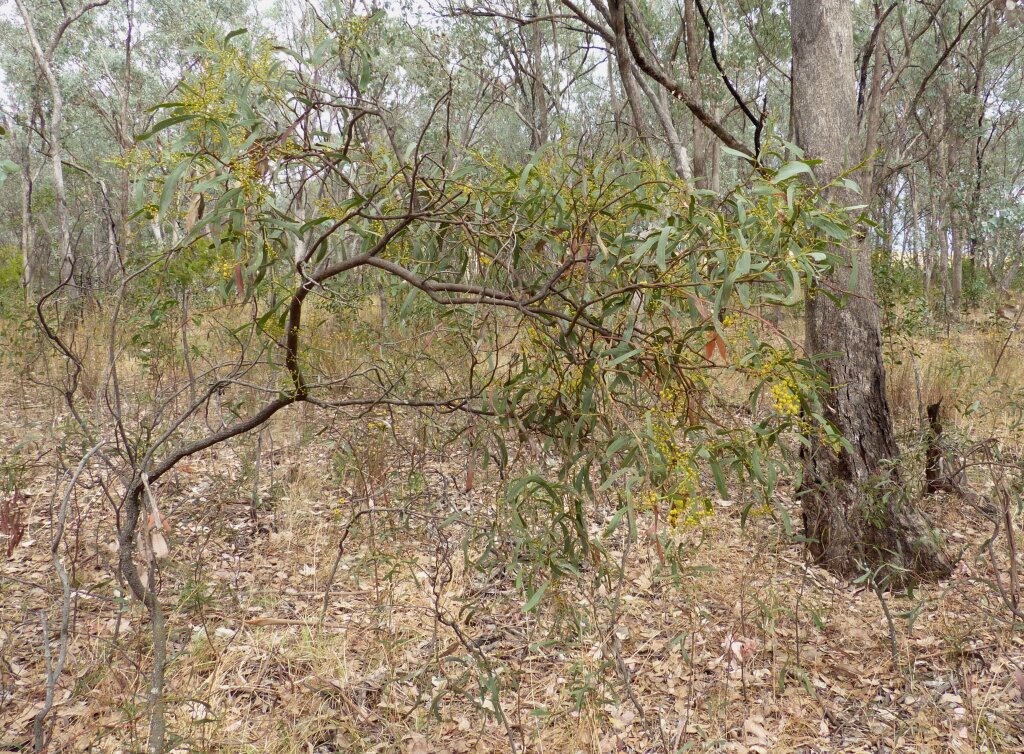Acacia difformis
R.T.Baker Drooping WattleIrregularly formed shrub or rounded tree, usually 2–7 m high, sometimes forming thickets; branchlets acutely triquetrous or flat at extremities, glabrous, red-brown. Phyllodes often pendulous, oblanceolate, sometimes narrowly elliptic or linear, mostly 6–16 cm long and 5–15(–20) mm wide, straight to recurved, glabrous, green to ash-coloured, obtuse; pinnately veined, midrib prominent, with a weaker vein parallel to midrib near adaxial margin, other veins fine; glands 1 or 2, the lowermost 1–3 cm above pulvinus. Raceme with rachis 1–6 cm long, glabrous; peduncles mostly 3–6 mm long, glabrous; heads globular, 20–35-flowered, light golden. Flowers 5-merous; sepals united. Pods more or less moniliform, to 20 cm long, 4–6 mm wide, thinly coriaceous-crustaceous, glabrous; seeds longitudinal, oblong to elliptic, 6.5–8 mm long, slightly shiny, dark brown; funicle encircling seed in a single fold, reddish-black, aril clavate. Flowers often Jan.–Feb., sometimes Jun.–Sep.
MuM, VVP, VRiv, MuF, Gold, CVU, NIS. Also NSW. Disjunctly distributed in northern Victoria, growing on sand or sandy loam, usually in mallee communities or open-forest.
A distinctive species due to its phyllodes having a strong midrib and a weaker secondary vein parallel to it which runs almost the full length of the phyllode near the adaxial margin. Acacia hakeoides is similar in phyllode and legume shape and size but differs especially in having phyllodes with 1 vein per face, white-fimbriate bracteoles and funicles that do not encircle the seeds.
Entwisle, T.J.; Maslin, B.R.; Cowan, R.S.; Court, A.B. (1996). Mimosaceae. In: Walsh, N.G.; Entwisle, T.J., Flora of Victoria Vol. 3, Dicotyledons Winteraceae to Myrtaceae, pp. 585–658. Inkata Press, Melbourne.
 Spinning
Spinning

